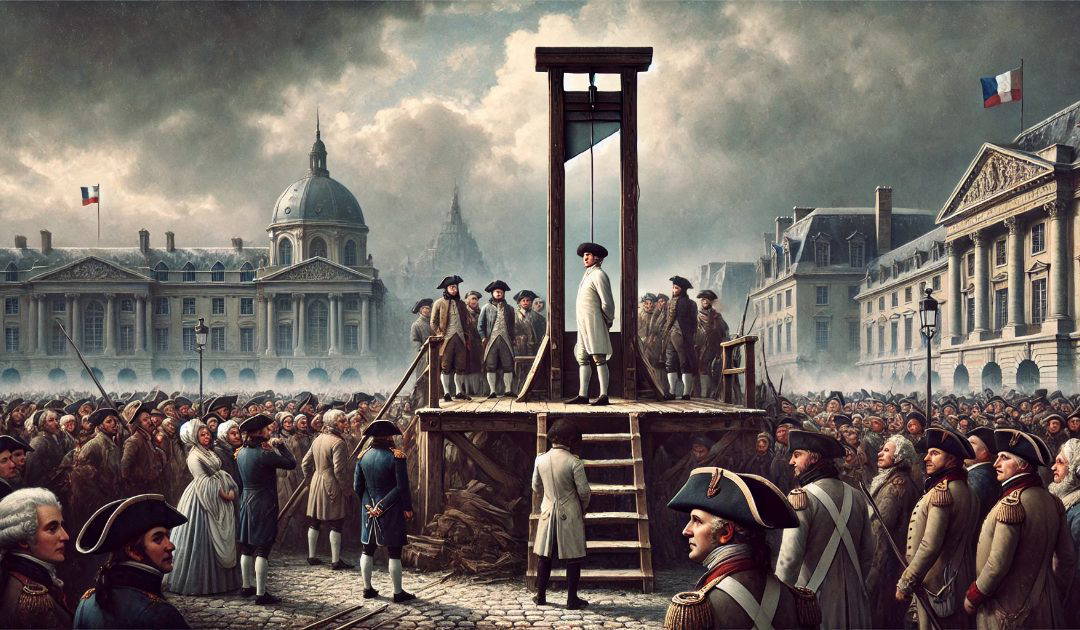On 21st January 1793 King Louis XVI was guillotined in Paris. He was the great-great-grandson of Louis XIII, a key character in my work in progress, the fifth book of the Sir Anthony Standen Adventures.
King Louis XVI of France, born on August 23, 1754, was the last king of France before the French Revolution. He ascended to the throne in 1774, following the death of his grandfather, King Louis XV. Louis XVI was a member of the Bourbon dynasty and was known for his earnest but often indecisive nature. His reign was marked by significant challenges, including financial crises, social unrest, and the growing influence of revolutionary ideas.
Louis XVI inherited a kingdom in turmoil, with a government heavily in debt due to extravagant spending and costly wars, including support for the American Revolution. His attempts to reform the tax system and reduce the financial burden on the monarchy were met with resistance from the nobility and the parliaments, leading to political gridlock. The king’s inability to effectively address these issues contributed to widespread discontent among the populace.
The Enlightenment, a movement emphasizing reason and individual rights, further fueled revolutionary sentiments. Philosophers like Voltaire and Rousseau criticised the monarchy and advocated for democratic ideals, which resonated with the increasingly frustrated common people. By the late 1780s, France was on the brink of revolution, and Louis XVI’s attempts to summon the Estates-General in 1789 to address the financial crisis inadvertently set the stage for the upheaval.
The Estates-General convened in May 1789, represented the three estates of the realm: the clergy, the nobility, and the common people (the Third Estate). The way I remember them is those that pray, those that fight, and those that work. However, tensions quickly escalated as the Third Estate sought greater representation and power. In June 1789, they declared themselves the National Assembly, signaling a challenge to the king’s authority. The subsequent storming of the Bastille on 14th July 1789, became a symbol of the revolution and marked the beginning of widespread unrest.
As the revolution progressed, Louis XVI struggled to maintain control. He attempted to flee Paris in June 1791 in a bid to regain power, but he was captured in Varennes and brought back to the capital. This failed escape further eroded his support and led to a loss of confidence in his leadership. In September 1791, the king reluctantly accepted a constitutional monarchy, but his power was significantly diminished.
By 1792, France was engulfed in revolutionary fervor, and the monarchy was abolished in September of that year. Louis XVI and his family were imprisoned, and he faced charges of treason. The National Convention, which had replaced the Legislative Assembly, ultimately decided his fate. On 15th January 1793, he was tried and found guilty of conspiracy against the state. Despite his pleas for mercy, he was sentenced to death.
Louis XVI was executed by guillotine on 21st January 1793, in the Place de la Révolution (now Place de la Concorde) in Paris. His death marked a pivotal moment in the French Revolution, symbolising the end of absolute monarchy in France and the rise of radical political change. The execution of Louis XVI shocked Europe and led to a series of conflicts known as the Revolutionary Wars, as monarchies across the continent feared the spread of revolutionary ideals. His legacy is complex, as he is often viewed as a tragic figure caught in the tides of history, representing both the failures of the monarchy and the tumultuous birth of modern France.

